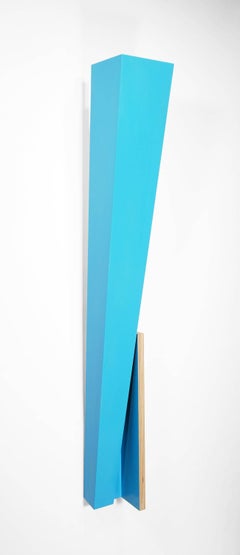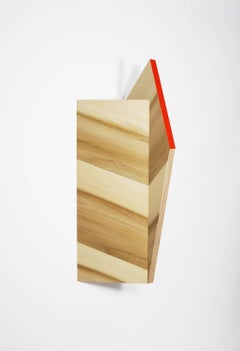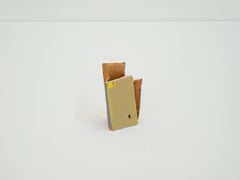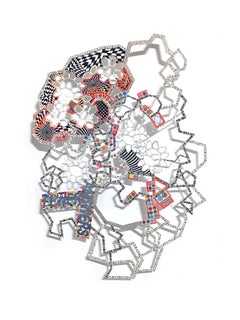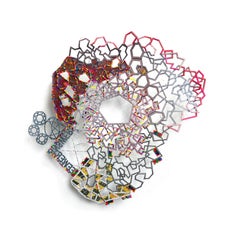ODETTA Abstract Sculptures
2010s Abstract Geometric Abstract Sculptures
Wood, Acrylic
2010s Abstract Geometric Abstract Sculptures
Poplar, Plywood, Acrylic
2010s Abstract Expressionist Abstract Sculptures
Wood, Paint, Found Objects
2010s Abstract Geometric Abstract Sculptures
Paper, Acrylic, Digital Pigment
2010s Abstract Geometric Abstract Sculptures
Paper, Acrylic, Digital Pigment
2010s Minimalist Abstract Sculptures
Archival Paper
2010s Minimalist Abstract Sculptures
Archival Paper
2010s Minimalist Abstract Sculptures
Acrylic, Canvas, Wood
2010s Abstract Geometric Abstract Sculptures
Wood, Acrylic
2010s Abstract Geometric Abstract Sculptures
Acrylic, Wood
2010s Abstract Geometric Abstract Sculptures
Acrylic, Wood
2010s Minimalist Abstract Paintings
Canvas, Wood, Oil
2010s Minimalist Abstract Paintings
Canvas, Wood, Oil
2010s Minimalist Abstract Sculptures
Plaster
2010s Minimalist Abstract Paintings
Canvas, Wood, Oil
2010s Color-Field Abstract Sculptures
Plexiglass, Polyester, LED Light, Acrylic
1990s Abstract Geometric Abstract Sculptures
Terracotta, Acrylic
21st Century and Contemporary Abstract Expressionist Abstract Sculptures
Bronze, Steel
2010s Abstract Geometric Abstract Sculptures
Steel
1970s Feminist Abstract Sculptures
Copper, Steel
1970s Feminist Abstract Sculptures
Copper, Steel
1970s Feminist Abstract Sculptures
Copper, Steel
21st Century and Contemporary Post-Minimalist Abstract Sculptures
Wood, Acrylic
2010s Conceptual More Art
Tape
2010s Conceptual Abstract Sculptures
Paper
2010s Conceptual Abstract Sculptures
Paper
2010s Conceptual Abstract Sculptures
Paper
2010s Conceptual Abstract Sculptures
Paper
2010s Conceptual Abstract Sculptures
Paper
2010s Conceptual Abstract Sculptures
Paper
2010s Conceptual Abstract Sculptures
Paper
2010s New Media Abstract Sculptures
Wire
2010s Conceptual More Art
Metal
2010s Abstract Geometric Abstract Paintings
Plexiglass, Acrylic
2010s Abstract Geometric Abstract Sculptures
Paper, Acrylic, Digital Pigment
2010s Abstract Geometric Abstract Sculptures
Mylar, Paper, Acrylic
2010s Abstract Geometric Abstract Sculptures
Mylar, Paper, Acrylic
2010s Arte Povera Abstract Sculptures
Silicone, House Paint, Wood Panel, Putty
Early 2000s Arte Povera Abstract Sculptures
Plastic, Found Objects
2010s Conceptual Abstract Sculptures
Pins, Organic Material, Plastic, Photographic Film, Acrylic Polymer, Fou...
2010s Conceptual Abstract Sculptures
Organic Material, Found Objects, Pins
2010s Op Art Abstract Sculptures
Paper, Acrylic, Mylar
2010s Conceptual Figurative Photography
Photographic Film, Found Objects
2010s Abstract Geometric Abstract Sculptures
Mylar, Paper, Acrylic
2010s Abstract Sculptures
Wood, Paint
2010s Minimalist Abstract Sculptures
Wood, Paint, Found Objects
2010s Minimalist Abstract Sculptures
Wood, Paint, Found Objects
2010s Abstract Sculptures
Wood, Paint, Poplar
2010s Abstract Sculptures
Wood, Paint
2010s Arte Povera Abstract Sculptures
Wood, Mahogany, Plywood
1990s Abstract Geometric Abstract Sculptures
Terracotta, Acrylic
1990s Abstract Geometric Abstract Sculptures
Terracotta, Acrylic
1990s Abstract Geometric Abstract Sculptures
Terracotta, Acrylic
1990s Abstract Geometric Abstract Sculptures
Terracotta, Acrylic
1990s Abstract Geometric Abstract Sculptures
Terracotta, Acrylic
21st Century and Contemporary Minimalist Abstract Sculptures
Enamel
2010s Conceptual Abstract Sculptures
Wood, Video, Found Objects
21st Century and Contemporary Abstract Abstract Sculptures
Wood
2010s Abstract Sculptures
Wood, Plywood
2010s Conceptual Abstract Sculptures
Wood, Plywood
